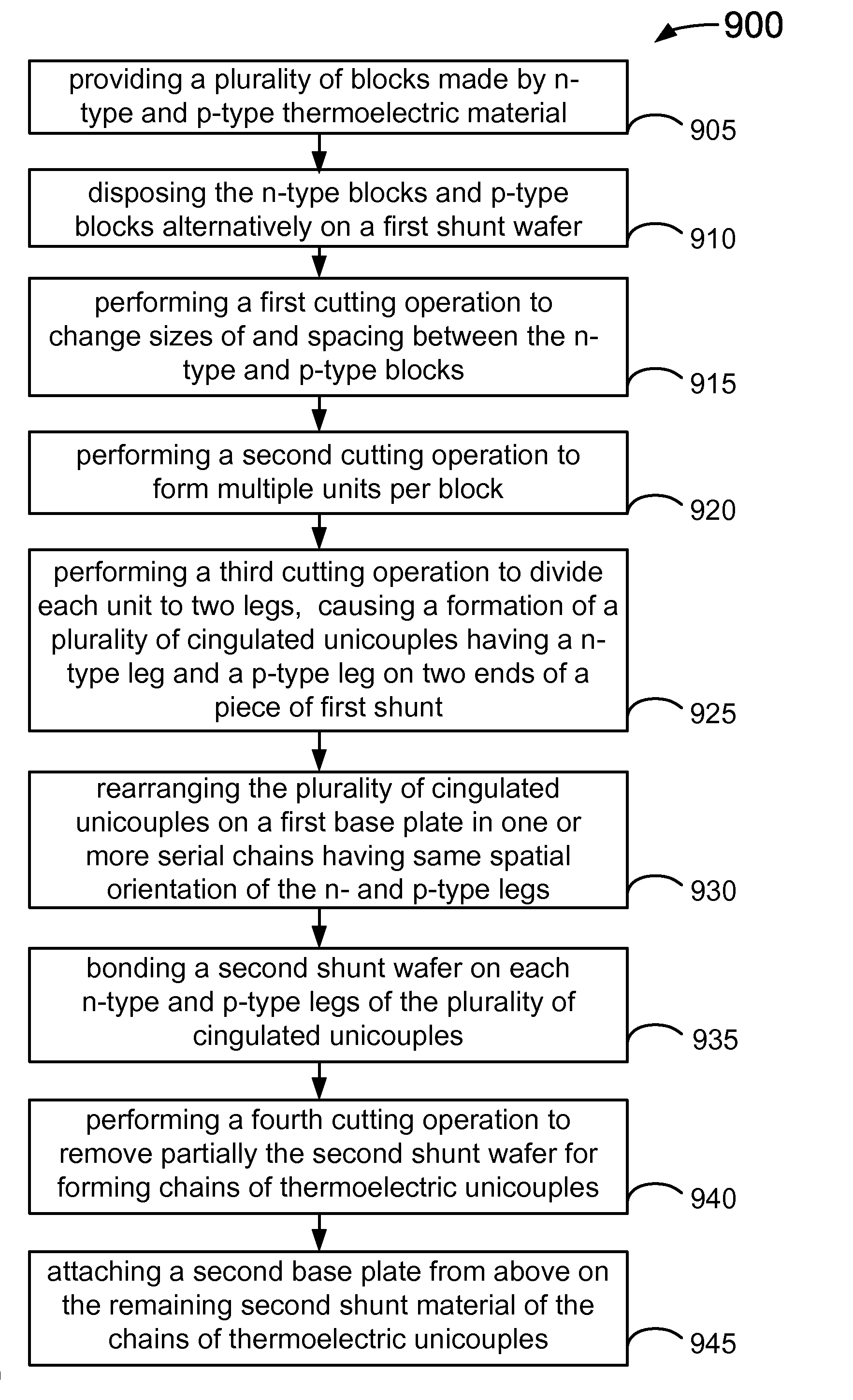Method and structure for thermoelectric unicouple assembly
- Summary
- Abstract
- Description
- Claims
- Application Information
AI Technical Summary
Benefits of technology
Problems solved by technology
Method used
Image
Examples
Embodiment Construction
[0031]The present invention is directed to thermoelectric module assembly. More particularly, the invention provides a method for forming an assembly in series of thermoelectric (TE) unicouples. Merely by way of example, the invention has been applied for sizing and assembling silicon-based thermoelectric unicouples bonded in parallel series with silicon-based contact wafers and heat sinks to form a 3D package of thermoelectric modules capable of generating electrical energy from high temperature waste heat. It would be recognized that the invention has a much broader range of applicability without limiting to specific material based TE unicouples, in various fields including but not limited to automobile combustion, industrial hot exhaust, nuclear power plants, and aircraft turbines.
[0032]FIG. 1 shows a schematic diagram of a thermoelectric unicouple as a material / structure unit for assembling a thermoelectric module in a daisy chain configuration according to an embodiment of the ...
PUM
 Login to View More
Login to View More Abstract
Description
Claims
Application Information
 Login to View More
Login to View More - R&D
- Intellectual Property
- Life Sciences
- Materials
- Tech Scout
- Unparalleled Data Quality
- Higher Quality Content
- 60% Fewer Hallucinations
Browse by: Latest US Patents, China's latest patents, Technical Efficacy Thesaurus, Application Domain, Technology Topic, Popular Technical Reports.
© 2025 PatSnap. All rights reserved.Legal|Privacy policy|Modern Slavery Act Transparency Statement|Sitemap|About US| Contact US: help@patsnap.com



